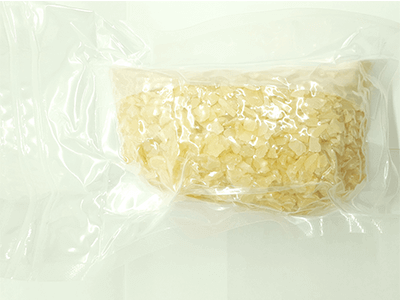¿Qué es un Inclinómetro Digital?
Los inclinómetros digitales son herramientas de medición que permiten determinar la inclinación o el ángulo de un objeto. La información capturada se presenta en una pantalla LCD digital. A diferencia de los inclinómetros analógicos, estos dispositivos tienen la capacidad de establecer una posición de referencia arbitraria y calcular el ángulo en relación a dicha referencia. Esto garantiza una alta precisión de medición y un rango amplio de aplicaciones tanto en investigaciones como en la industria.
Por ello, se utilizan para tareas como trabajos de fontanería y drenaje, construcción de edificios con estructura de acero, instalación de equipos y dispositivos médicos. Existen dos tipos principales de métodos de medición de ángulos: uno utiliza la tecnología MEMS y el otro utiliza la inclinación del electrolito.
Aplicaciones de los Inclinómetros Digitales
1. Obras de Corte y Construcción
Los inclinómetros digitales se utilizan para medir el ángulo de incidencia de las brocas en las obras de corte. Si el ángulo se desvía del ángulo objetivo, cambia la dirección del corte, lo que supone una pérdida de trabajo y un peligro.
También son útiles para medir el ángulo de las grúas en las obras. La medición del ángulo permite predecir peligros. Se pueden realizar fácilmente mediciones horizontales y verticales de estructuras de acero y tuberías.
2. Paneles Solares
Se utiliza para el seguimiento solar de paneles fotovoltaicos. Se monta directamente sobre el objeto de medición con el fin de obtener una carga suficiente.
3. Otros
Otra aplicación es el ajuste horizontal y vertical durante la instalación de maquinaria de precisión, instrumentos de medición, cuadros de distribución, etc. Se utilizan para medir el ángulo del brazo de robots y otros equipos automáticos.
Además, los inclinómetros digitales también se utilizan en la industria médica, donde se emplean para determinar con precisión el ángulo del rotador de medición en equipos de TAC y rayos X. El posicionamiento de la cama en la que yace el paciente permite localizar con precisión lesiones en el cuerpo humano.
Principios de los Inclinómetros Digitales
1. Método MEMS
Los sensores de inclinación emplean la tecnología MEMS (Sistemas Micro Electro Mecánicos), en la que se establece una matriz de electrodos dentro de una cámara completamente sellada. Uno de los electrodos permanece fijo, mientras que el otro puede moverse libremente al estar conectado a un resorte elástico. El otro polo se desplaza libremente mediante una conexión de muelle a resorte.
Cuando se inclina el sensor de inclinación, la posición del electrodo del extremo libre cambia en relación con el electrodo del extremo fijo, y al mismo tiempo se genera una diferencia de capacitancia antes y después del cambio. La diferencia de capacitancia en ese momento se convierte en un ángulo.
2. Método Electrolítico
En los sensores de inclinación que utilizan la tecnología electrolítica, se montan dos pares de electrodos en el fondo de la cámara paralelos al eje de medición y se llenan de electrolito. Cuando se aplica una tensión entre los dos electrodos, la corriente forma un campo de dispersión. Como resultado, la cámara se inclina y el nivel del líquido cambia, al igual que el campo de dispersión.
La conductividad del electrolito es constante y el cambio de resistencia depende de su relación con el nivel del líquido. Como no hay más piezas móviles que el electrolito, el desgaste es mínimo y el electrolito es muy resistente a los golpes. El electrodo utilizado para la medición se sumerge en el electrolito y éste no se corroe.
Características de los Inclinómetros Digitales
1. Corte en V e Imán Incorporado
Las superficies de medición de la mayoría de los inclinómetros digitales son de corte en V para una excelente estabilidad incluso en tuberías. La superficie inferior, por ejemplo, tiene un imán incorporado, lo que hace que los trabajos en tuberías de acero, marcos de acero y plantas sean más eficientes.
2. Alta Precisión
La alta resolución y precisión pueden visualizarse digitalmente en dos ejes simultáneamente. Son posibles soluciones integrales para la nivelación precisa, la alineación, el perfilado de superficies y la medición de vibraciones. La precisión suele rondar los ±0,03-0,2º y la resolución, los 0,01-0,1º. Y elimina el ensayo y error de leer un eje cada vez, ahorrando tiempo y permitiendo un trabajo profesional de alta calidad.
3. Visualización Comparativa
Cualquier ángulo puede utilizarse como referencia 0° y visualizarse en comparación con otros ángulos. Por ejemplo, si una posición de 30° se establece como referencia 0° en el modo de comparación, una posición de 50° en el modo normal se mostrará como 20°.
4. Rendimiento a Prueba de Polvo y Agua
El sistema puede utilizarse de forma segura con las manos mojadas y en zonas polvorientas de la obra. La mayoría de las prestaciones a prueba de polvo y agua son equivalentes a la norma IP54 establecida por la CEI (Comisión Electrotécnica Internacional).
